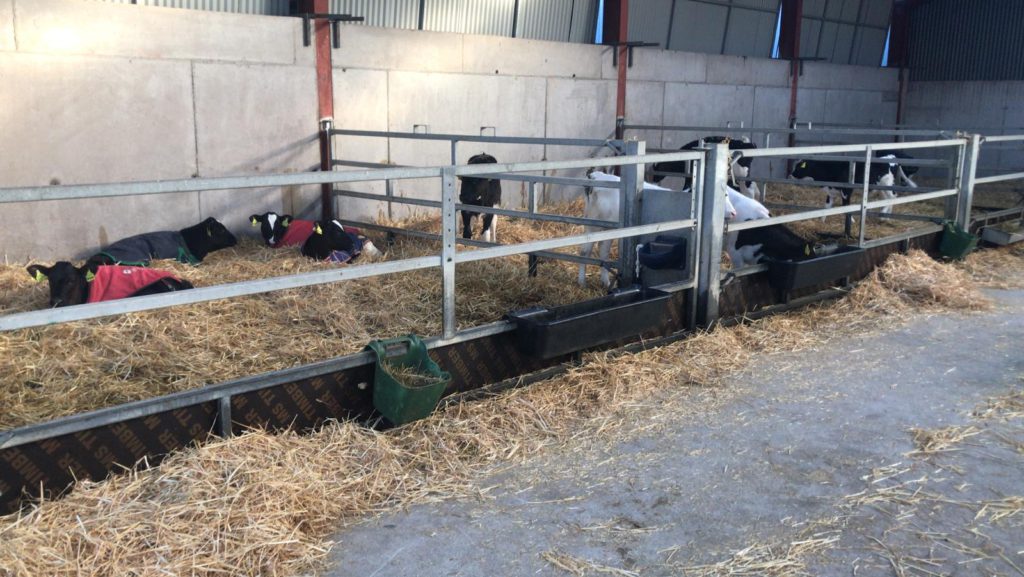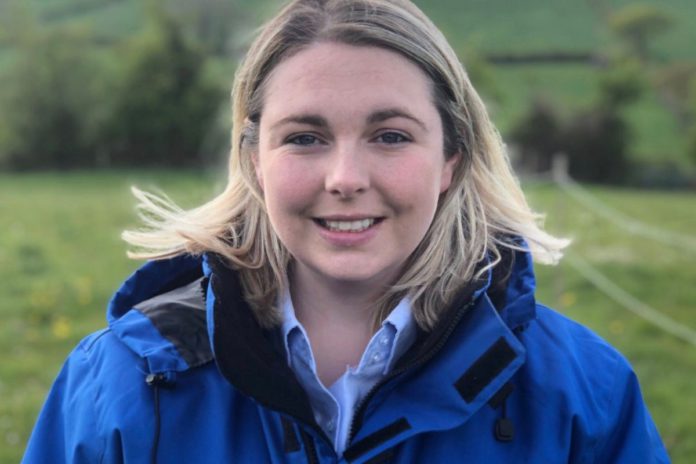Judith McCord, dairying adviser, CAFRE, Downpatrick, profiles Beech Park Farm. The farm
Beech Park Farm, located close to the village of Crossgar in Co Down, is home to the Hogg family dairy farm.
The partnership of Alan, Linda, and son, Tom, manages the Holstein dairy herd plus all replacement stock.
The farm has 110-acres available for the dairy cows and young stock to graze.
The Hogg’s clear goal is to efficiently maximise production from grazed grass whilst having a healthy and happy lifestyle balance.
Top-quality grazing and grass is a key priority on the farm. With 3,400 litres produced from forage, the average purchased feed for the herd is at 2.3t/cow, giving an overall feed efficiency of 0.27kg/l.
BDG
The CAFRE Business Development Group has been instrumental in developing the business since the scheme began in 2015.
BDG meetings provide an opportunity for farmers to connect with CAFRE dairying advisers to explore developments for their farm with the aim of improving the technical efficiency and profitability of their farm business.
They said: “The local discussion group has provided us the opportunity to improve our dairy business based on the experiences of other farmers.”
“This group approach builds on the knowledge within the group and is proven to be an effective method of increasing farm profitability.”
The Hoggs have found it beneficial regarding access to information and research. Also, they have had the opportunity to visit other dairy producers.
Beech Park Farm
There is “no need for fancy systems” on the Hogg’s farm, just a simple system that is efficient and profitable.
They milk cows through a 12-point swing over parlour with ACRs, and Tom manually sets up feed allocation to help target concentrate feeding.
While in the BDGs, both Alan and Tom have seen computerised feed-to-yield as a beneficial technology adoption. They will include it in the system at some stage in the future.
Grassland management
They graze cows as early as possible, with on/off grazing at the start of the season.
Land around Beech Park Farm can be heavy, so poaching prevention is important.
Cows will go out full-time from mid/late April, and grass measuring takes place on the farm throughout the season.
Through key discussion points on grazing techniques, soil performance and grass quality within the Hogg’s BDG, they have been able to improve the grazing infrastructure to allow for an extended grazing timeframe, effectively giving the herd more days at grass.
Improving fertility
In recent years, the goal has been a compact calving pattern. These results are now filtering into the system with higher submission rates to first service and a better workload pattern for everyone involved in the farm.
They breed all heifers and the top third of cows to AI sires (sexed semen). Besides, they utilise Aberdeen Angus semen on the middle third, and a beef bull sweeps up the lower third.
Before this, they used stock bulls extensively, but the Hoggs have moved away from this. Instead, they have developed a more strategic breeding plan to deliver genetic gain in the herd.
Animal health
When cows are due to dry off, they set up a separate batch and house cows for 60 days before calving.
They feed dry cows 1.5kg dry cow blend through a TMR, with high fibre forage and free access to lick blocks.
They introduce freshly calved cows and heifers back into the herd 24 hours after calving down unless there are any specific issues.
Getting the dry cow transition right is something that the Hogg family understand is essential to having a healthy milk cow and calf down the line.
Colostrum management on-farm is key. Calves receive colostrum by teat in the first 6 hours. The majority is tested and the excess is frozen.
For the first three days, calves are in individual pens and receive their dam’s milk. Then, they move into pens of four where they are fed powdered milk for 6-8 weeks.
This attention to detail is where Linda excels in producing strong, healthy calves as replacements for the herd.

Milk recording
Since Tom came home from his travels in New Zealand, he is devoted to increasing efficiency and profitability on-farm.
One important farm development area is trying to reduce antibiotic usage in the herd.
Alan and Tom use milk recording information which highlights cows with potential problems.
A recent BDG meeting highlighted just how beneficial this information could be in terms of milk urea levels, milk components.
Also, it has helped streamline the ability to start selective dry cow therapy and consequently breeding for herd genetic improvement.
Production
At the beginning of December, the herd averaged 26 litres with 4.47% fat and 3.5% protein.
Going forward, the Hogg family’s attention to detail, along with constructive discussions and feedback from their BDG, will continue to deliver improvements for the business.
Other articles:





